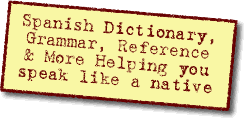It isn't true that an adverb must follow a verb. That is often the case, but it isn't always the case.
In your first sentence you have
two clauses, separated by '
que'.
The adverb '
ya', in the first clause, modifies '
sé'. It sounds better if said prior to the verb.
In the second clause, the adverb is '
aquí'. It may follow the verb or precede the verb, but because the subject pronoun is present, it may be better left the way it is.
In your last sentence you have a valid case of multiple adverbs, since there is only one clause. The first adverb, '
siempre', is one of frequency. The other is an adverb of manner (how something is done). It doesn't sound good to use these two together (that is usually only done when adverbs modify adjectives or adverbs or adverbial phrases), so they are located on opposite sides of the verb. The frequency adverb sounds better prior to the verb. The manner adverb sounds better after the verb.
By the way, there is an 'Accents' drop-down menu just above where you type where you can select the special characters needed to write in Spanish. There is a change in meaning between '
se' and '
sé', '
esta' and '
está', '
El' and '
Él'. Also check the spelling of '
aquí'.


 . Thanks for letting me know how to do it!
. Thanks for letting me know how to do it!

 Similar Threads
Similar Threads








